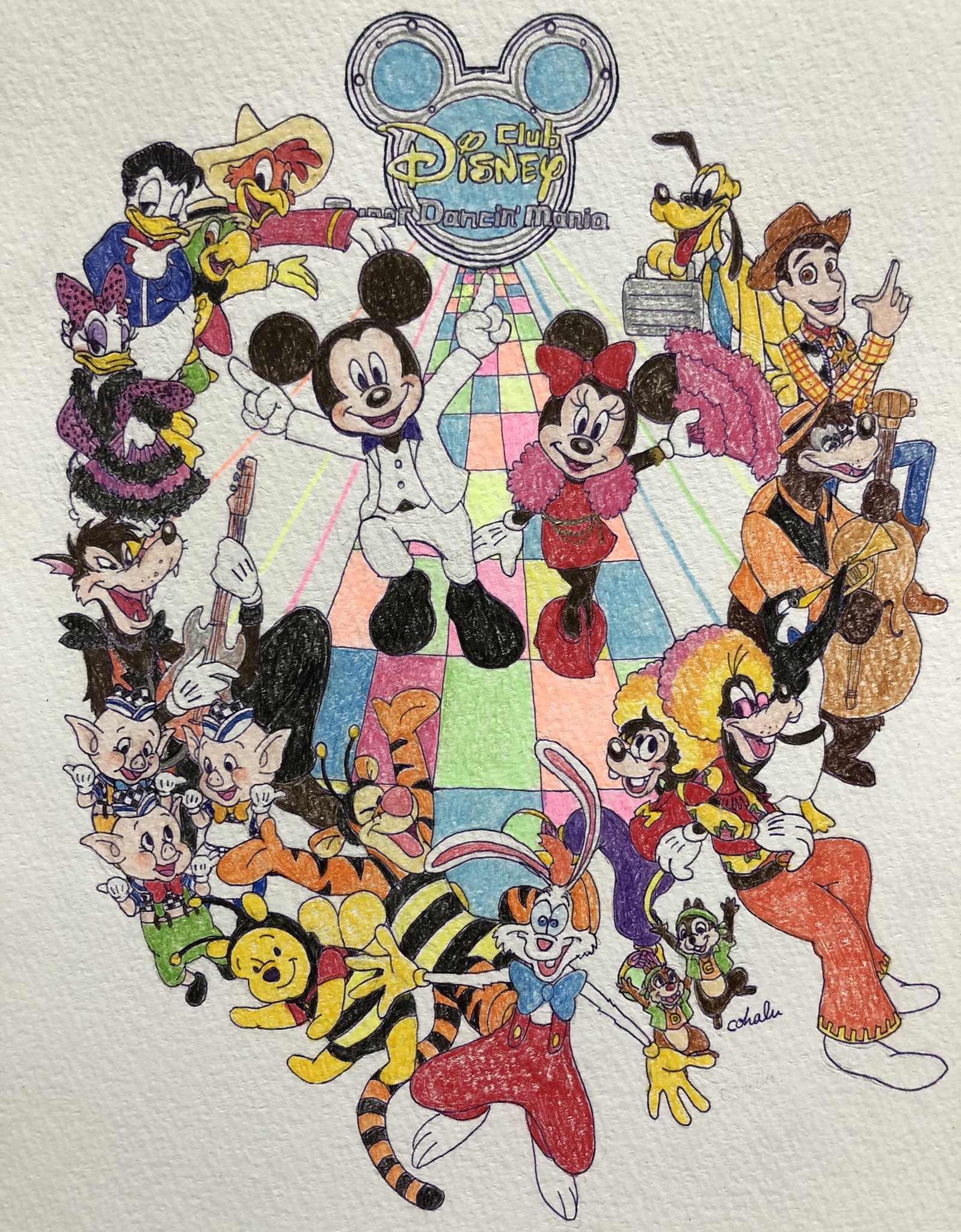商品の詳細



ミニーマウス、デイジーの手にヒビありです
ディズニー好きの方の2000年生まれのお子様の記念や結婚記念日に
ディズニー関係の出品はこちら
#永谷園はディズニーのスポンサーではない
クラブディズニー Super Dancin’ Maniaイベントの貴重なスタチューです。
クラブ・ディズニー(Club Disney)は、2000年1月21日から同年6月30日にかけて、東京ディズニーランド (TDL)で開催されたスペシャルイベントの名称。開催期間中は、キャッスルフォアコートステージで、スーパーダンシン・マニア(Super Dancin'mania)というステージショーが開催された。
スーパーダンシン・マニアは、期間中を3つの「ステージ」に分けて、それぞれで別のショーを開催した、
ショーの形式編集
初めに「Club Disney」が流れ、最後に「Super Dancin'mania」が流れる。その間には、各テーマに沿った曲が次々と流れていく。
ステージは、他のスペシャルイベントで設置されたキャッスルフォアステージとは異なり、中央の花壇とシンデレラ城前のステージが通路でつながるような形になっている。観客は、シンデレラ城前のステージと、その他の部分を取り囲むようにしてショーを鑑賞する形になる。また、立ち見で鑑賞する。 ミッキーは、花火の演出とともに登場し、スモークとともに消えていく。また、ステージからはディスコを思わせる照明のような物がClub Disneyのロゴとともに登場
商品の情報
| カテゴリー: | ゲーム・おもちゃ・グッズ>>>おもちゃ>>>キャラクター玩具 |
|---|---|
| 商品のサイズ: | |
| ブランド: | ディズニー |
| 商品の状態: | 傷や汚れあり |
| 配送料の負担: | 送料込み(出品者負担) |
| 配送の方法: | らくらくメルカリ便 |
| 発送元の地域: | 東京都 |
| 発送までの日数: | 4~7日で発送 |
商品の説明

東京ディズニーランド Club Disney スーパーダンシン・マニア~メガビ

2024年最新club disney スーパーダンシン・マニア~ディスコ

こはる on X: \"Dance Club Disney Come on and let\u0027s get busy tonight

東京ディズニーランド Club Disney スーパーダンシン・マニア~メガビ

懐かしいディズニー音楽~CD(東京ディズニーランド®クラブ・ディズニー スーパーダンシン・マニア~メガビート)

Club Disney Super Dancin\u0027 Mania Mega Beet/2000.3.5_18:00 TDL⁄ Tokyo Disneyland⁄東京ディズニーランド yt 0113

Club Disney スーパーダンシン・マニア~メガ・ビート(2カメ編集・2000-02)
最新のクチコミ
コンパクトで軽くて最高 値段も最高 買って損無し!
- アイルトン16
- クチコミ投稿 1件
購入品
義両親にお中元として贈りました。 量も丁度良かったし、何より美味しかったと喜んでくださいました。
- あやなち7
- クチコミ投稿 1件
購入品
お店で食べて忘れられなくて購入。2回目です。キムチや玉子などが付いてるので、正しくお店の味そのままで大満足です。
- kOuda
- クチコミ投稿 1件
購入品
ニューヨークの文字のラスタ色がかなりかっこいい
- そらうみ0405
- クチコミ投稿 1件
購入品
ドラム式洗濯機を購入し、知人に勧められたのがこちら。据え置き台は、隙間を掃除できるし、大変便利で、大満足です。
- シロ珊瑚
- クチコミ投稿 1件
購入品
迅速な対応ありがとうございました また壊れたら購入したいです。
- まぁちゃん3400
- クチコミ投稿 1件
購入品
届きました。早急な対応ありがとうございました。
- NAJA1224
- クチコミ投稿 1件
購入品
リビング階段で、暖房効率をあげたくて階段との仕切りとして購入しました。 こちらを使ってから、暖房をつけて部屋があたたかくなるまでがはやくなりました! しっかりとした生地なのと、色味が優しくて気に入っています。
- 麻ちん
- クチコミ投稿 1件
購入品
レディース・ヘアアクセサリー・その他キング
-
-
2

️お得なセット売り️SHARP 冷蔵庫 洗濯機 一人暮らし
m79430700846
¥ 19820.00
-
3

ダイワエメラルダスエアーLT3000
m38813241206
¥ 12800.00
-
4

4 プラチナ ダイヤ ループ ネックレス
m53742685028
¥ 14170.00
-
5

SHARP ホットクック KN-HW16F-W WHITE
m21281116554
¥ 19210.00
-
7

リゼロ2021誕生祭 レム クッション
m19859465784
¥ 14490.00
-
8

ミューズ様専用パーフェクトクオン用ナンバー枠
m91971274331
¥ 18900.00
-
9

※開封済み/美品 CSM カブトゼクター1.5
m15470061995
¥ 16300.00
-
10

聖観音 立像 木彫り 柘植製
m88491546071
¥ 15750.00
この商品を見ている人におすすめ
-
-

m55858449129
¥ 20130.00
-

m92670137506
¥ 20120.00
-

m73151725760
¥ 15750.00
-

m80569712104
¥ 18900.00
-

m64896761308
¥ 12790.00
-


